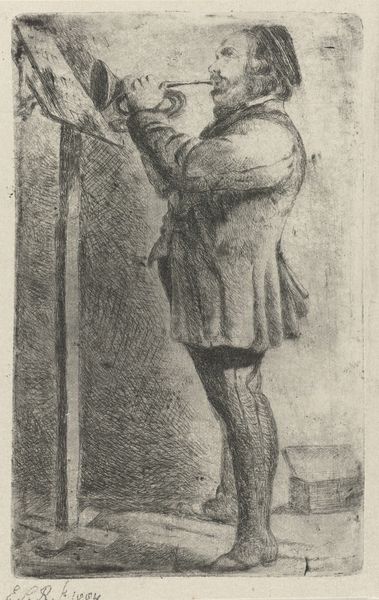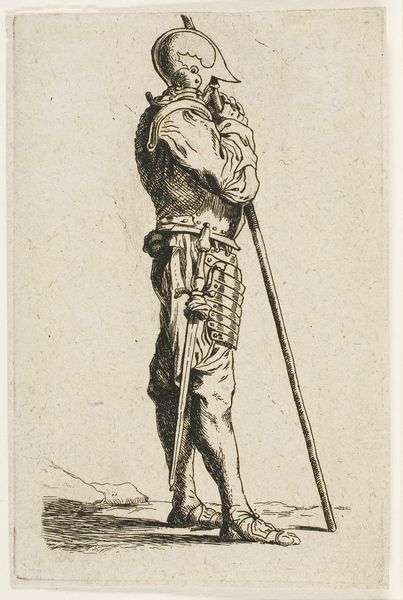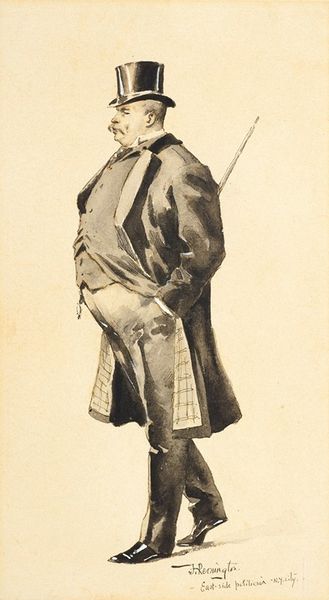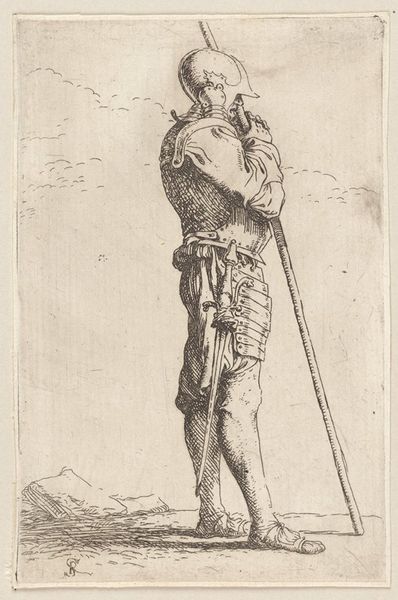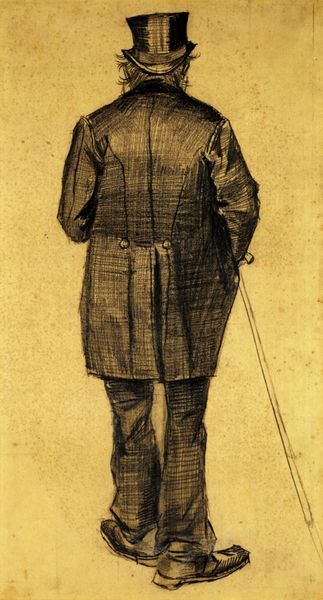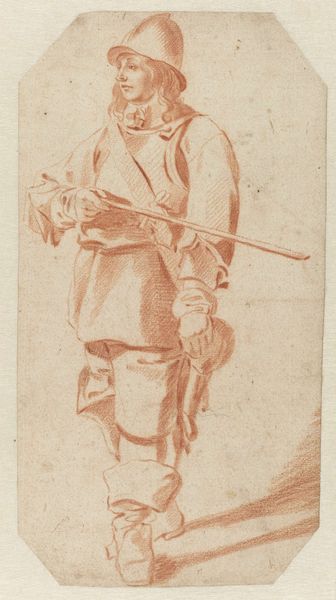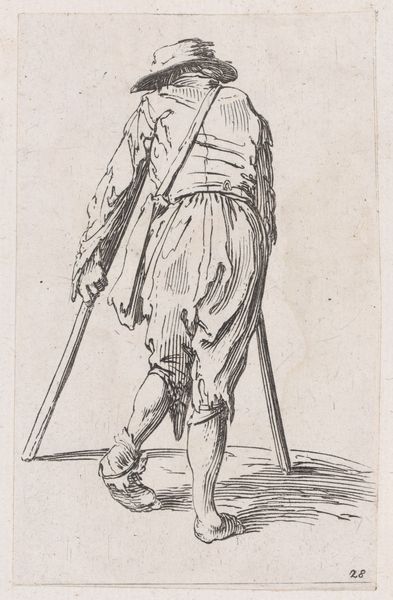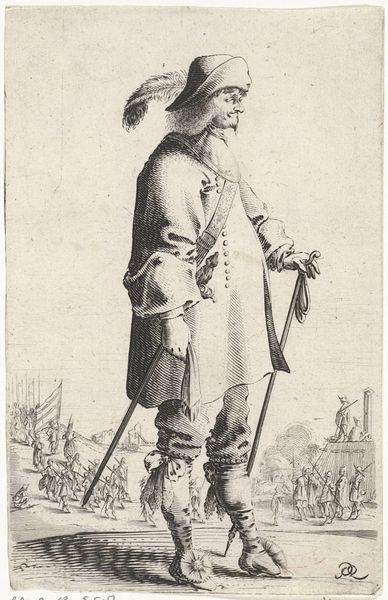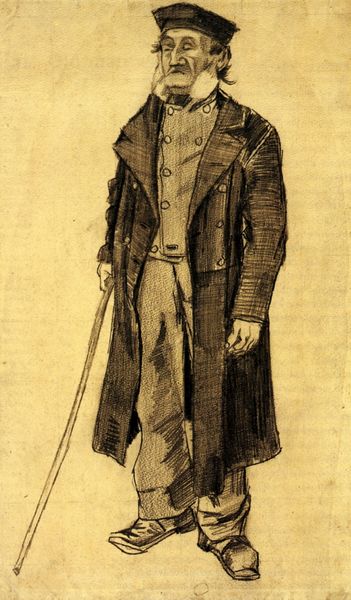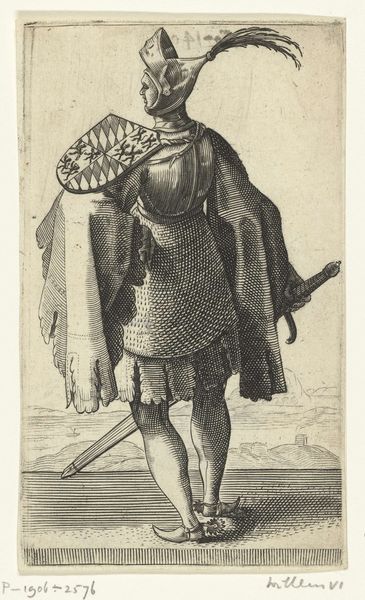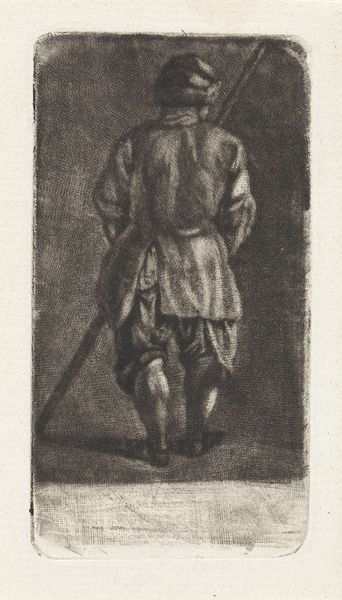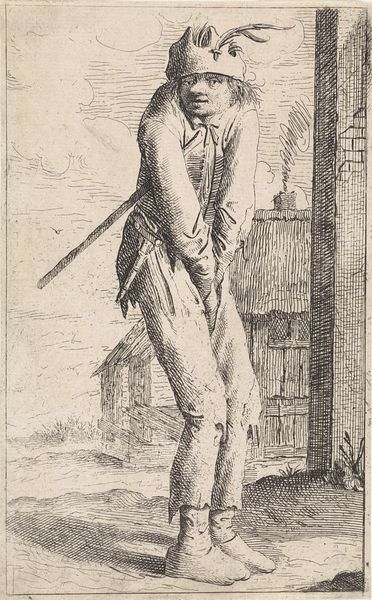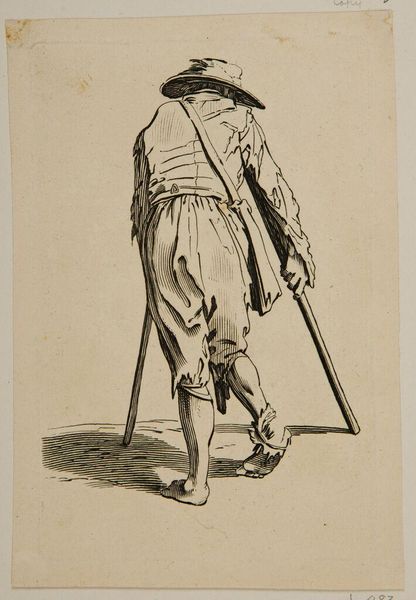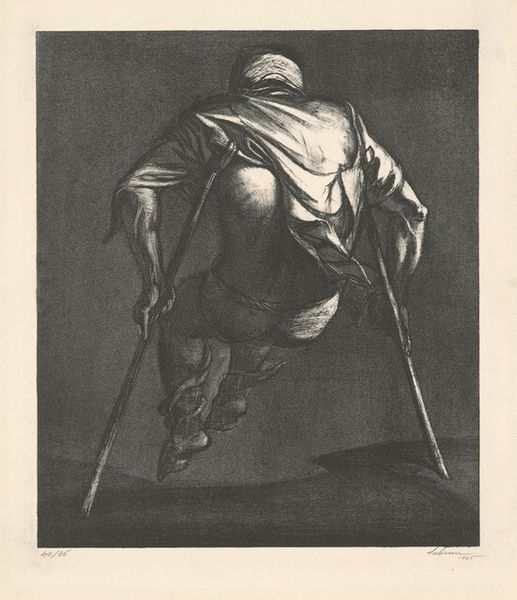
painting, oil-paint
#
portrait
#
baroque
#
portrait
#
painting
#
oil-paint
#
genre-painting
#
realism
Dimensions: 60.3 x 91.1 cm
Copyright: Public domain
Curator: Here we have Georges de la Tour’s “Old Man,” painted around 1619. It's an oil on canvas, and as you can see, La Tour employs a distinct style characterized by strong chiaroscuro. Editor: The immediate impression is one of deep solitude. The way the figure is hunched over, almost swallowed by the shadows, it really evokes a sense of quiet suffering or resignation. Curator: It's important to consider the societal context. Genre paintings such as this, portraying common people, gained popularity during the Baroque period. These works served various purposes—sometimes moralizing, sometimes simply capturing everyday life. The public role of the work has shifted, as it allows for social commentary now. Editor: Absolutely. And I think the clothing adds another layer. These aren’t rags, exactly, but practical garments of a lower class. What does it say about how the artist sees his role in society at that moment? I find myself wondering about the experience of ageing and the precarity of life for the working class during this time, but perhaps it speaks more universally to something that many people know across culture and time. Curator: La Tour's style also stands out in its stark realism and simplified forms, distinguishing it from the more florid style one often finds in Baroque painting. Note his adherence to naturalistic details; the deeply lined face, the almost weary posture. He depicts with an unvarnished eye the realities of human existence, marking a departure from idealized forms. Editor: There's a rawness to it. He is rendered as just another face in society; he becomes one man holding the weight and history of labor, gender and politics. It's almost confrontational in its honesty, but also in the lack of context we’re given. Curator: Precisely, his visual vocabulary engages complex debates surrounding age, labor, and identity that reverberate to our day. Thank you for illuminating how these historical nuances amplify its significance and public appeal. Editor: Thanks. Hopefully we’ve opened up space to think about whose stories get told and how. It gives us another glimpse at the power art can have to confront power structures.
Comments
No comments
Be the first to comment and join the conversation on the ultimate creative platform.
